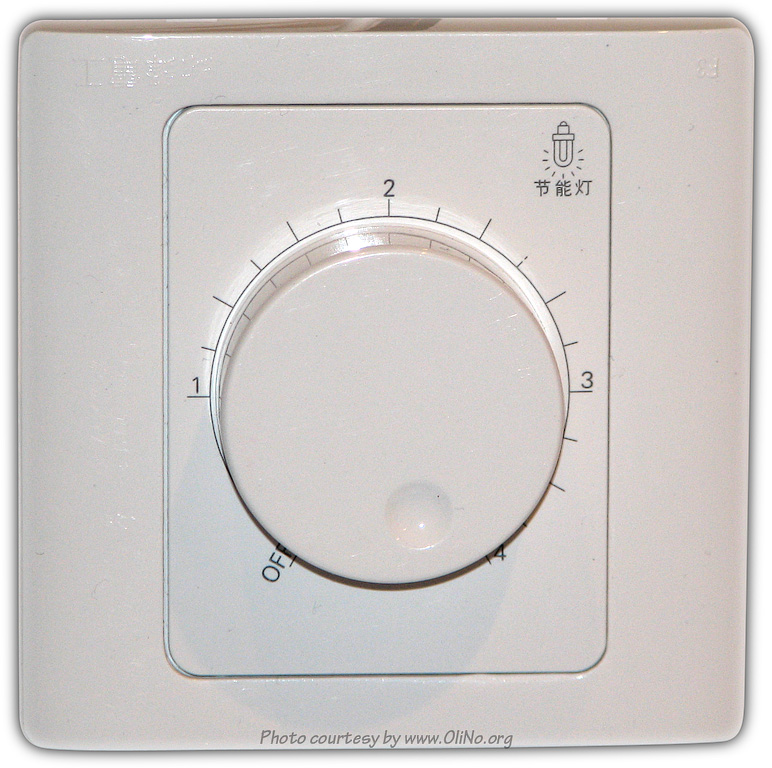 OliNo executes endurance tests on (led)lamps. This article explaines what the data that is obtained when doing endurance tests on (led)lamps. An ASSIST publication was used as the basis for the derivation of the results of the measurements.
OliNo executes endurance tests on (led)lamps. This article explaines what the data that is obtained when doing endurance tests on (led)lamps. An ASSIST publication was used as the basis for the derivation of the results of the measurements.
First the test setup is explained and then the measurements done and extracted.
 When OliNo receives lamps that are dimmable then OliNo has a few dimmers to choose from. Dimmers that are connected between the grid voltage and the lamp have two main principles of operation: phase Wanneer OliNo lampen te meten krijgt die dimbaar zijn, dan heeft OliNo een paar dimmers waaruit ze kan kiezen. De dimmers die rechtstreeks tussen de netspanning en de lamp aangesloten worden kennen een tweetal dim-pincipes: forward phase-cut and reverse phase-cut. Some of it has been explained in an explanation article on this site.
When OliNo receives lamps that are dimmable then OliNo has a few dimmers to choose from. Dimmers that are connected between the grid voltage and the lamp have two main principles of operation: phase Wanneer OliNo lampen te meten krijgt die dimbaar zijn, dan heeft OliNo een paar dimmers waaruit ze kan kiezen. De dimmers die rechtstreeks tussen de netspanning en de lamp aangesloten worden kennen een tweetal dim-pincipes: forward phase-cut and reverse phase-cut. Some of it has been explained in an explanation article on this site.
In this article the available dimmers are used for different types of lamps. The current and voltage are measured after the dimmer, so the voltage across the lamp and the current through it.
It will become clear that there are different types of dimmers and lamps react differently. We will look at the voltage and current waveforms to see the differences. The article explains whether the lamp tested was well dimmable with a certain dimmer type or not.
Update Dec 013: addition of new dimmer, the Lumeo Domus that works with loads from 7 W/VA.
Update April 2014: addition of Busch Jaeger LED dimmer 6523 U.
In almost all lamp measurement articles one can find the measured value for Power Factor. In this article I explain more about it.

Dimmers are used in many places, to gerenate the requested atmosphere. And one can believe that dimming also saves on consumed power, which is true, but how much?

 Lamps flicker when they are on. Well, most of them do. And with flickering I mean to say they vary in illuminance. There were messages in the media about (led)lams that flicker so much that people got a headache because of it when working in that light..
Lamps flicker when they are on. Well, most of them do. And with flickering I mean to say they vary in illuminance. There were messages in the media about (led)lams that flicker so much that people got a headache because of it when working in that light..
OliNo has a way to measure the variations in illuminance and attribute to it a number; a so called illuminance modulation index. This article explains how is measured and gives a number of examples.
 What is white light? In the OliNo lamp measurement articles a chromaticity diagram is given and the color point of the light of the tested lamp is indicated. The chromaticity diagram contains all possible colors, and which are white?
What is white light? In the OliNo lamp measurement articles a chromaticity diagram is given and the color point of the light of the tested lamp is indicated. The chromaticity diagram contains all possible colors, and which are white?
Power Factor, THD and current trough neutral line
Posted by Marcel van der Steen in Explanation 1 Comment» Suppose you want to change the current light bulbs into new ones, for instance led illumination. What does that mean for the current through the neutral line, harmonics etc? Recently I received three questions. An answer was so lengthy that it would not fit on the FAQ, hence a little article.
Suppose you want to change the current light bulbs into new ones, for instance led illumination. What does that mean for the current through the neutral line, harmonics etc? Recently I received three questions. An answer was so lengthy that it would not fit on the FAQ, hence a little article.
Background THD and IEC-61000-3-2:2006 results in lamp measurement articles
Posted by Marcel van der Steen in Explanation 2 Comments» This article gives the background and explanation of the THD and compliancy to IEC-61000-3-2:2006 measurement details and results given in the lamp measurement articles.
This article gives the background and explanation of the THD and compliancy to IEC-61000-3-2:2006 measurement details and results given in the lamp measurement articles.
From lamp measurement articles links will be used to refer to this explanatory article, and herewith keeping the measurement articles small in length and to-the-point, by preventing the same explanation over and over.
 This article explains about the S/P ratio. At very low ambient light levels this ratio indicates the maximum gain in efficiency one can obtain just by using different receptors in the human eye.
This article explains about the S/P ratio. At very low ambient light levels this ratio indicates the maximum gain in efficiency one can obtain just by using different receptors in the human eye.
The teaser image shows the spectrum of the light of a streetlight, and also the two human eye sensitivity curves; the daytime (red) curve lower in sensitivity than the nighttime (black).
 Illumination, expressed in lux, is being measured frequently. There are a number of norms that give recommended values for lux at dif ferent workspots, roads etc. Final customers seeking installers for lighting, can require these norms to be met. Measurements are normally done with luxmeters, but not all give the correct readings.
Illumination, expressed in lux, is being measured frequently. There are a number of norms that give recommended values for lux at dif ferent workspots, roads etc. Final customers seeking installers for lighting, can require these norms to be met. Measurements are normally done with luxmeters, but not all give the correct readings.
This article explains the measurement technique of two meters that both measure lux and therefore could be used to verify a lighting installation. However both do it on its own way and depending on the spectrum of the light of the lighting installation, each type of lux meters give significant different results.
The cause for this is also explained and the article concluded with recommendations.





Recent Comments